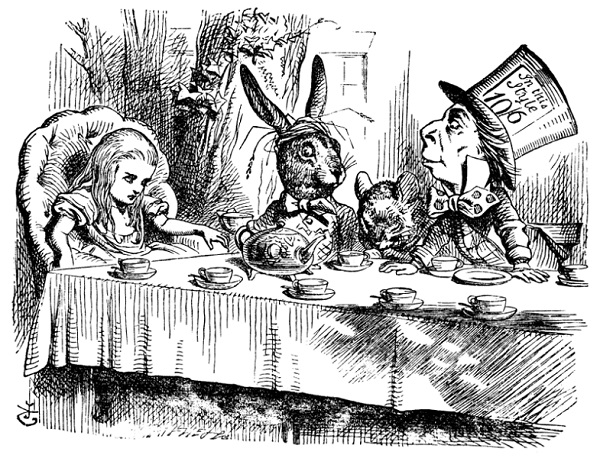Even if they’re set on the most fantastic, alien world imaginable, the stories we read are ultimately human stories. That’s why it’s important to write characters who are compelling and believable, which is easier said than done. Here are seven tips that may help:
1. Study Your Favorite Characters
One of the best ways to learn how to write a character is to see how other people do it. Fortunately, there are plenty of characters to choose from: in books, on television, and in movies. Pick your favorite characters and think about what it is you like about them. What sort of strengths do they have? What sort of weaknesses? What sort of journey do they go on? What do they learn? What do they want, what do they need, and how do they get it?

Source: Wiki Commons
2. Draw Inspiration From Real People
In this writer’s humble opinion, it’s simply not enough to read about characters or watch them on TV. If you want your characters to feel like real people, they have to be based in part on real people. Fortunately, we live in a world full of people and I guarantee you know at least a few of them. It’s good to start by observing family members or close friends and using them as inspiration. You can let people know they’ve been an inspiration, but…it’s usually not a good idea to tell them exactly which character they’ve inspired. So don’t tell them, even if they prod.
By the way, the one person you can always draw inspiration from, who you most certainly understand inside and out, is…yourself! Many novice writers tend to steer clear of adding any of themselves to their characters, and it’s true that there’s a stigma surrounding self-inserts and literary wish-fulfillment. However, toss those inhibitions aside, because you are your own most valuable inspiration for your characters. You have interesting quirks, hopes, fears, and flaws that can be passed on to your characters and help bring them to life, so don’t be afraid to use them.

Source: Pixabay
3. Pay Attention To The Way People Speak
The best way to get a feel for natural speech is to pay close attention to the way people speak in real life. Where do people pause? How are words emphasized? Which words are most often and least often used? What sort of slang and jargon do people use, and how do they shorten speech to make it more efficient?
However, it’s important to realize that characters don’t speak like real people. For example, you’ll hear people in real life use filler words like “um” as they search for the next thing to say. In a book, these filler words would be distracting to the reader; after all, characters don’t need to think about what they’re going to say next. In real life, people make small talk. In books, a character says something only if it’s relevant to the story. One great way to learn the difference is to study the way speech is written in books and how it sounds on TV.

Source: Pixabay
4. Write A Character Profile
Once you have a good idea of who your character will be, it’s a good idea to fill out a character profile. This will help you create detailed characters, and it also serves as a handy reference that will ensure your character’s details remain consistent throughout your story. For major characters, you’ll probably want an in-depth character profile. For minor characters, you can most likely get away with writing down the basics like name, age, appearance, personality, and backstory.

Source: Pixabay
5. Interview Your Character
This is similar to the character profile, but it’s a little different. You’ll be answering questions about your character…but this time, it’s from their perspective. This is a great exercise to help you get into your character’s head and better understand how they think. Filling out a character questionnaire also helps you develop the distinction between self and character, which is especially important if you’re using yourself as inspiration. If your character is part of a long novel or script, it can also be helpful to fill out a questionnaire several times, at different points in their development, to see how their answers to the questions have changed over time.

Source: Pixabay
6. Balance Strengths With Flaws
In real life, nobody is perfect. We all have flaws and irrational fears and sometimes we make mistakes. The most surefire way to make sure that your characters are both believable and relatable to your audience is to make them believably flawed. However, human beings aren’t completely flawed. We all have our strengths, too, so don’t go overboard on the flaws to the point where it’s ingratiating.

Source: Pixabay
7. Give Your Character A Challenge
If there’s one mistake that novice writers make with their characters, it’s being too overprotective of their characters. As the saying goes, if you love ’em, you have to let ’em go. Let your characters face seemingly impossible odds. Let them feel unsure about themselves. Let them lose some fights, because they’ll only become stronger for it in the end. A character who is perfect at everything and breezes through every obstacle with ease is a boring character. And the worst thing a character can be is boring.

Source: Pixabay
Remember, a character is only as good as the effort you put into making them.
YouTube Channel: Jenna Moreci
Featured image via Pixabay



